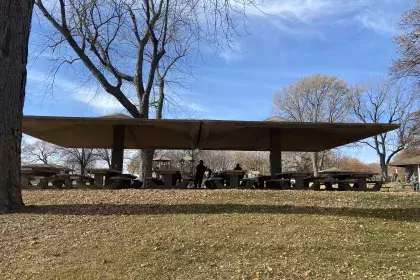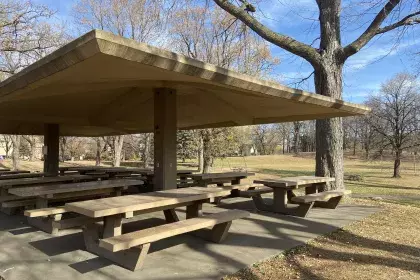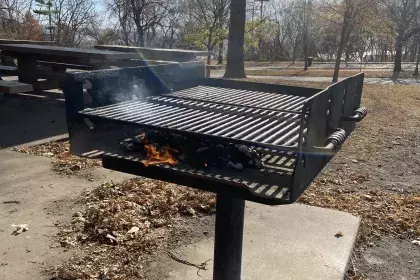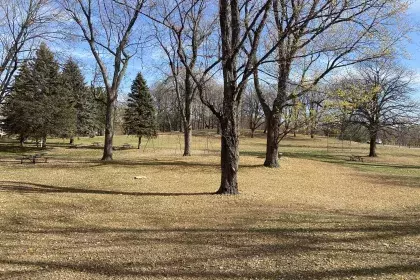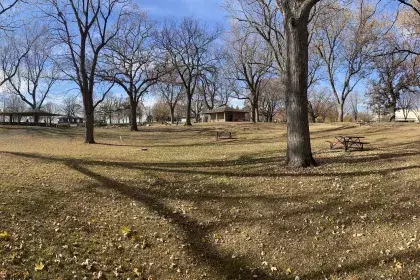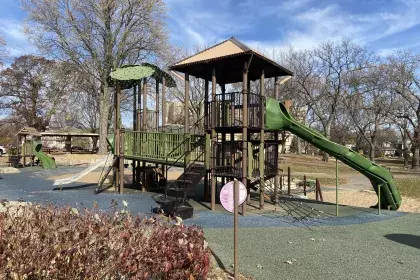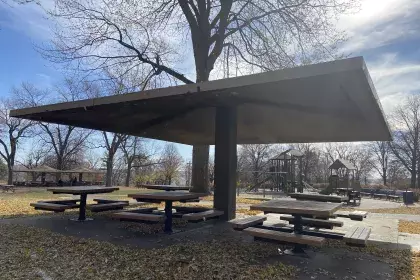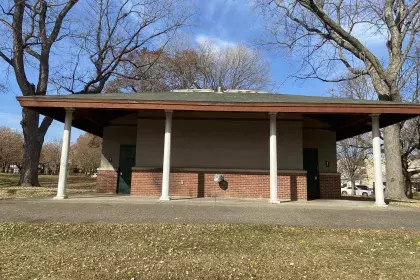About Wicaḣapi: A Sacred Burial Place
The landscape of Wicaḣapi (Literal translation: they bury them. Free translation: burial place. Pronounced we-CHA-ha-pee) is a sacred place of burial. It is a cemetery built by ancestors of living people. The place has deep significance to the Upper Sioux Community, Lower Sioux Community, Shakopee Mdewakanton Sioux Community, Prairie Island Indian Community, Ho-Chunk Nation of Wisconsin, Iowa Tribe of Kansas and Nebraska, Sisseton-Wahpeton Oyate, and other descendants of those who are buried here. It is home to the only known remaining burial mounds within the Minneapolis-Saint Paul urban core.
Amenities
BBQ grills
Picnic area
(2) picnic shelters
Playground
Restroom building
Scenic overlook
(2) tennis courts
Maps
Permit and Rental Information
Please call the Park Permit Office at 651-266-6400 for more information or to make a reservation. Office hours are 7:30 a.m. to 4:30 p.m., Monday through Friday. The possession of alcohol is prohibited in the park.
Large Shelter
- Seats approximately 80 people.
- Electricity is available at a 110 volts. Multiple crock pots, coffee pots, roasters and other electric items may cause overloads on the power source.
- Reserve Online
- Rental Rates
- Rental Information
Small Shelter
- Seats approximately 30 people.
- Electricity is available at 110 volts. Multiple crock pots, coffee pots, roasters and other electric items may cause overloads on the power source.
- Reserve Online
- Rental Rates
- Rental Information
History
The Indigenous burial ground of Wicaḣapi has been a sacred site and place of burial for over a thousand years. It is significant to living Indigenous Peoples as a cemetery where their ancestors are buried. It is a place of reverence, remembrance, respect, and prayer. When the City of Saint Paul established a park in this location in 1892 with the purpose of protecting the historical setting and spectacular views, connections of contemporaneous Indigenous Peoples to the sacred site were not understood, considered, or valued. Over the last century the condition, name, and use of the landscape as a park have become beloved to the surrounding community. Yet many non-Indigenous people have wondered about this powerful landscape without knowing how to learn more about it. Through public gatherings with generous sharing by Indigenous Peoples and members of the public, strong support for protection of this sacred site has been revealed.
The Cultural Landscape Study and Messaging Plan is an initial step to update the City’s practice for preservation awareness, and understanding of sites significant to American Indians. The project team conducted rigorous research to provide a basis for a shared understanding among diverse project collaborators. The study presents a comprehensive framework for acknowledging the sacred site and the living Indigenous People whose ancestors are buried there while:
- protecting, preserving and emphasizing the unique heritage of the location;
- strengthening appreciation of American Indian heritage;
- improving environmental sustainability and resilience to climate change; and
- reducing carbon footprint; and fostering understanding through physical transformation of, and messaging within, the landscape.
In May 2025, the City of Saint Paul adopted the recommendations of state Tribal Historic Preservation Officers to rename two culturally significant and sacred Dakota sites. The cultural landscape encompassing Bruce Vento Nature Sanctuary and Indian Mounds Regional Park is now designated as Imniżaska (white cliffs, pronounced e-me-NE-zha-ska). Within this landscape, the two individual sites will now be designated as Waḳaƞ Ṭípi (Dwelling Place of the Sacred, pronounced wah-KAHN TEE-pee) and Wic̣aḣapi (Dakota cemetery, pronounced we-CHA-ha-pee), respectively. This action reflects the city’s commitment to preserving Indigenous heritage and strengthening its long-standing partnership with Dakota leaders and communities.
During the consultation process, these site names, their translations, and appropriateness were vetted by multiple Dakota first language speakers and Dakota language instructors. The spellings are in the Dakota orthography developed by the University of Minnesota’s Dakota Language Department.
Plans
- Indian Mounds Regional Park Plan
- Indian Mounds Regional Park Natural Resources Plan
- Indian Mounds Cultural Landscape Study and Messaging Plan
Current Projects
Visit the Wicaḣapi Projects page for current project information.
